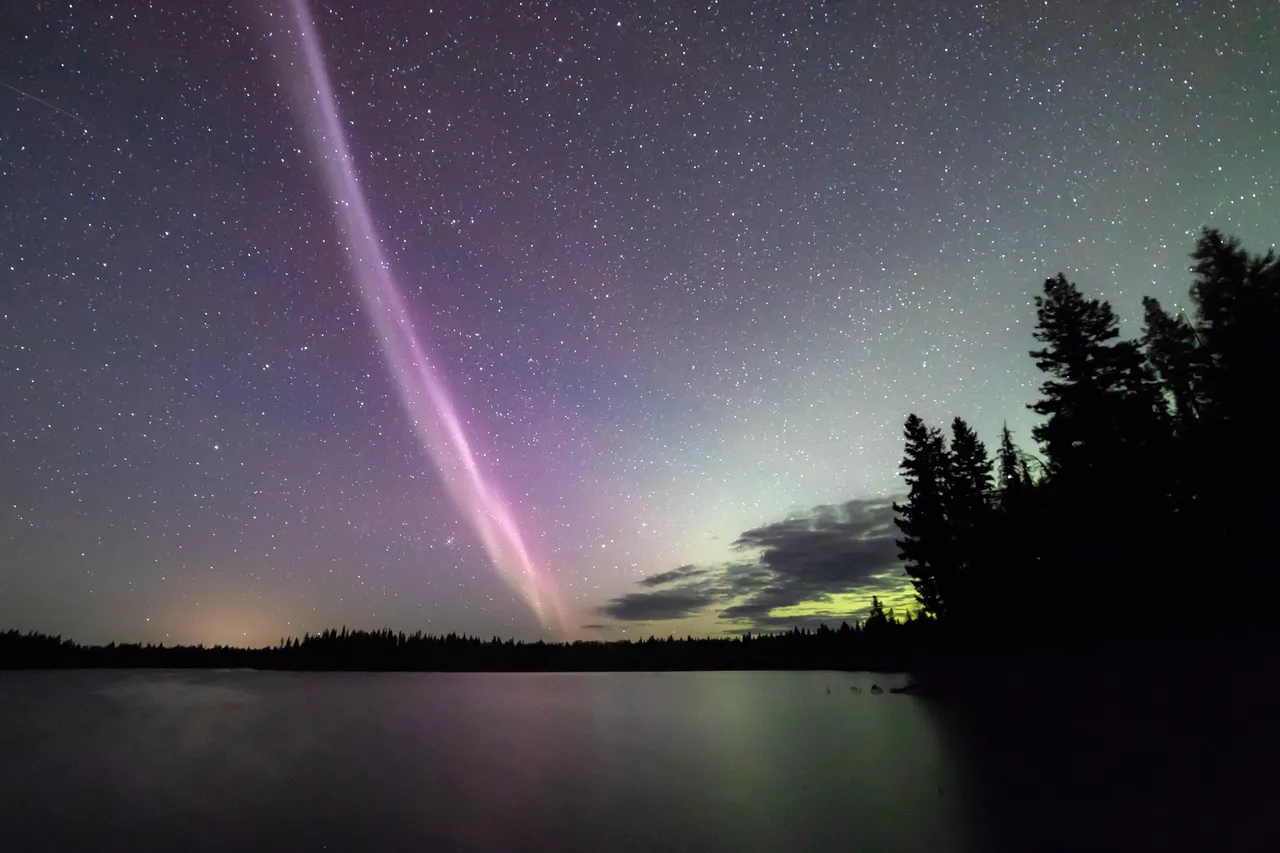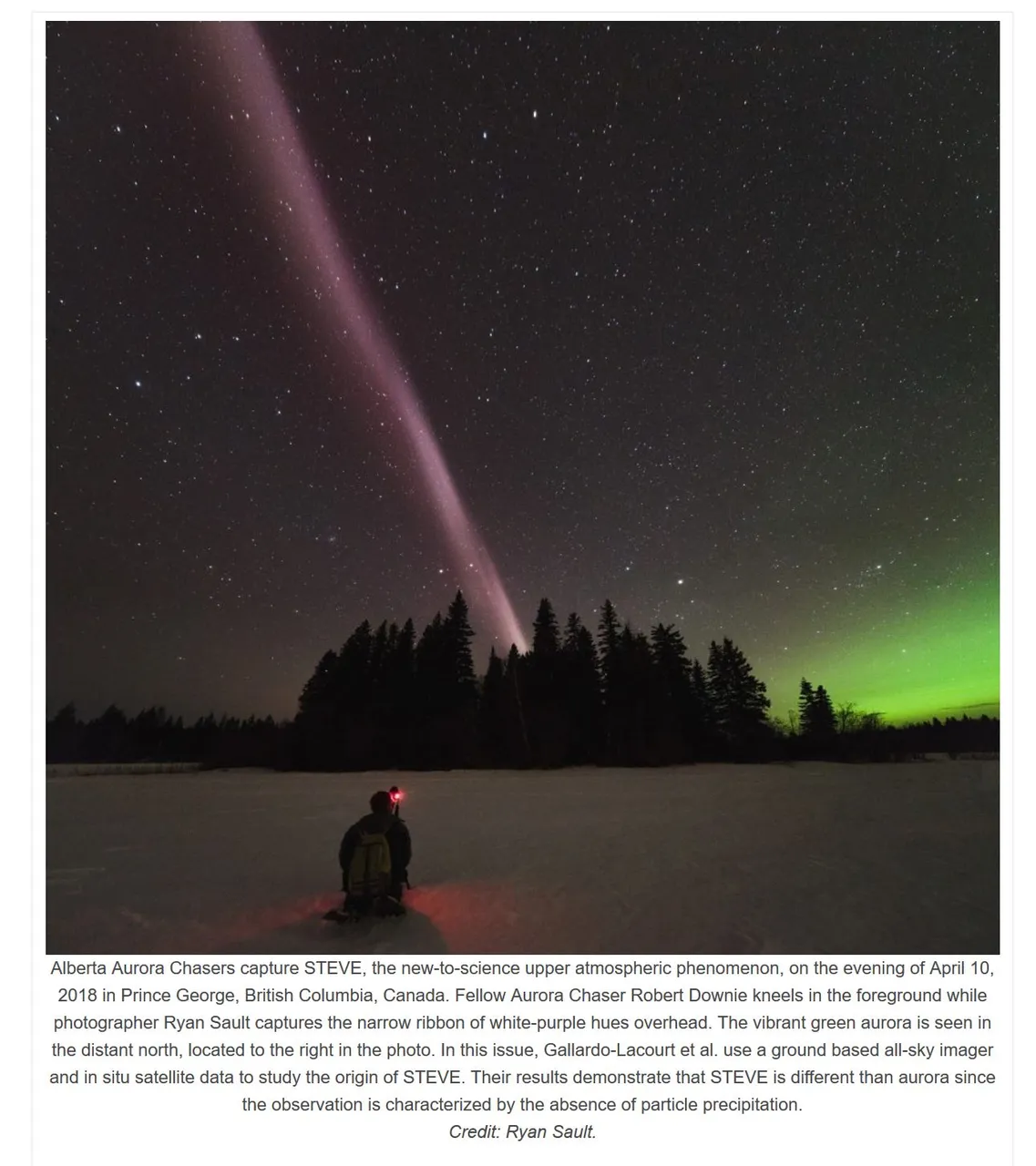For all the astrophotographers and night sky enthusiasts out there I suggest you check out Bea Gallardo-Lacourt’s new paper “On the Origin of STEVE: Particle Precipitation or Ionospheric Skyglow?” So we now know that while Steve accompanies an aurora, it is not actually formed by the same mechanism of particles raining down into the ionosphere. The paper suggests that Steve is an entirely new phenomenon distinct from typical auroras, as the POES-17 satellite detected no charged particles impacting with the ionosphere during the Steve event which was studied. This means that is likely produced by an entirely different yet unknown mechanism they call “skyglow”. The skyglow is somehow related to the band of fast-moving ions and super-hot electrons passing through the ionosphere right where Steve was observed.
I took the shot below of Steve over Circle Lake in Eskers Provincial Park, Northern British Columbia, Canada. It was a very dark night so you can see some skyglow in the sky along with some green from the Aurora Borealis in the North to the right of frame. 
You can find a summary of the paper here up on the American Geophysical Union (AGU) website. The paper itself can be found here here. You can even see a rare photo of me in the AGU article taken by my good friend Ryan Sault which I pasted below.

You can see the shots that I took that night in my post Who is Steve? from earlier in the year.
Robert Downie
Love Life, Love Photography
The first image in this post was taken by and remain the Copyright of Robert Downie - http://www.robertdowniephotography.com. The second image was taken by and remain the Copyright of Ryan Sault and has been reproduced with permission.
.